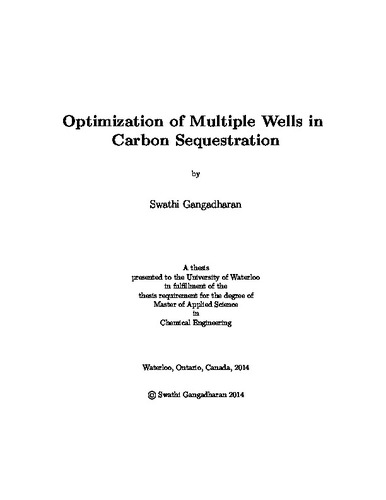| dc.description.abstract | Injection of CO2 in saline aquifers is considered as one of the best strategies for the reduction of greenhouse gases. In order to select a potential saline aquifer storage site for carbon sequestration, many parameters are considered such as relative permeability, thickness, compressibility, porosity, salinity and well interference. These are significant because they affect the CO2 storage capacity of the reservoir. The one of the most important criteria to be considered during sequestration is the pressure profile inside the reservoir as the sequestered CO2 increases the pressure within the saline formation over time. In order to maintain the integrity of the reservoir, the reservoir pressure is always maintained below the fracture pressure. Thus, modeling of pressure profile is essential as it controls the maximum amount of CO2 which can be into the reservoir. There are various analytical and numerical models to determine the bottom-hole pressure for CO2 injection. The main objective of my thesis is to examine and identify the analytical approaches in modeling of pressure profile during CO2 injection. It includes single injection as well as multiple wells injection scenarios. The second case is much more important from practical point of view and applicability of analytical tools should be validated. Two models of injection/production are considered: (i) Single-phase (brine production from a brine reservoir) and (ii) Two phase model (CO2 injection in a brine reservoir). In both cases, we analyzed the pressure build-up and discussed the results in comparison with numerical simulations. We also present a sensitivity analysis of the reservoir parameters on CO2 sequestration. The second part of the thesis focuses on finding ways to increase the CO2 injection capacity of saline aquifers by using the technique of multiple wells injection strategy. Numerous test cases will be presented to optimize the well placement and number of wells to get the maximum sequestration. The thesis will look upon the different ways to maintain the reservoir pressure below fracture pressure such as optimization of injection wells, varying the flow-rates of injection wells and by placement of relief wells to produce brine from the reservoir. | en |

